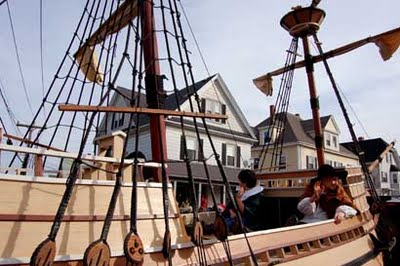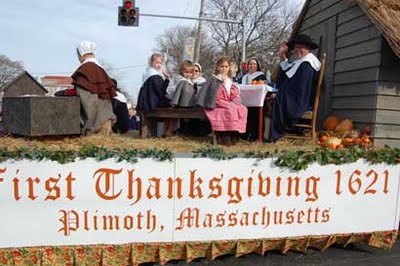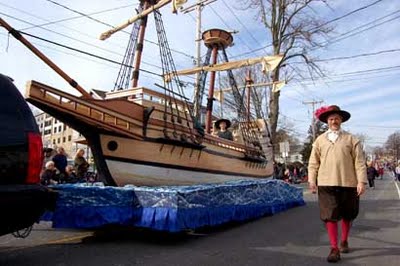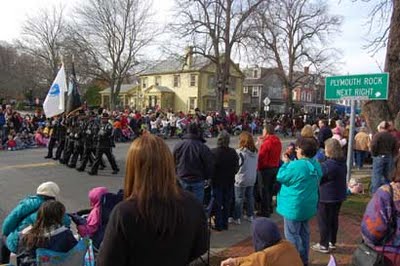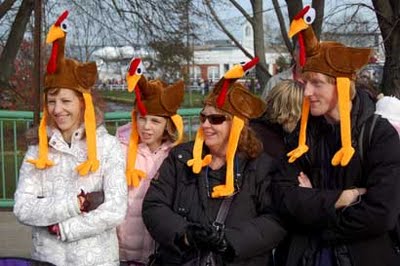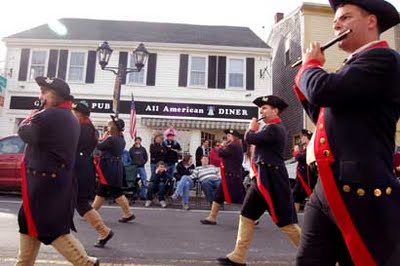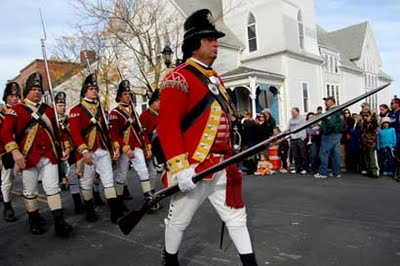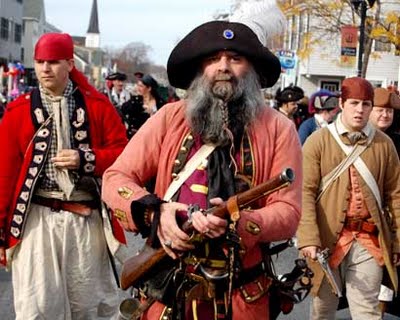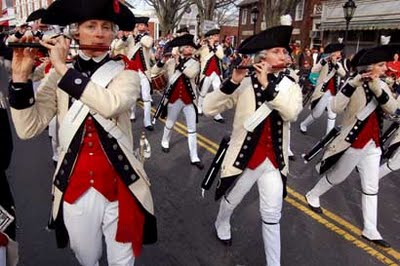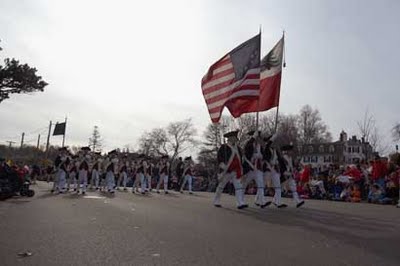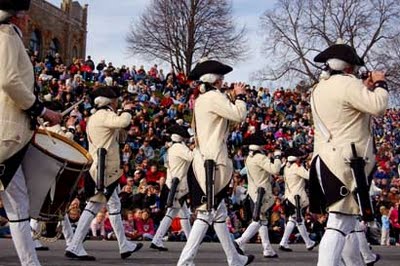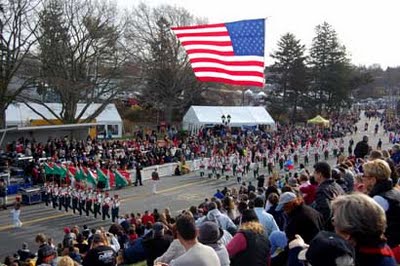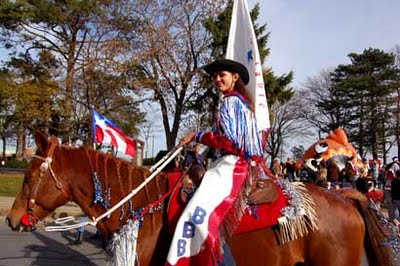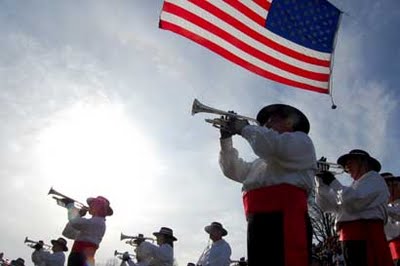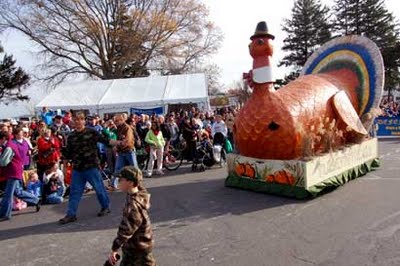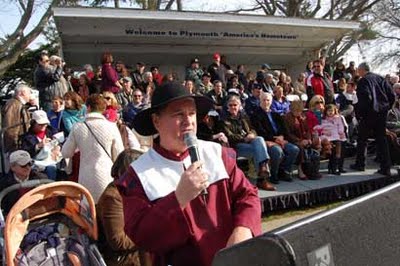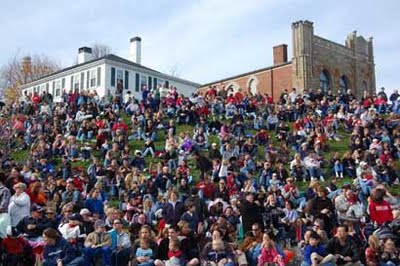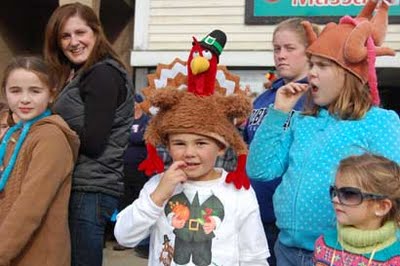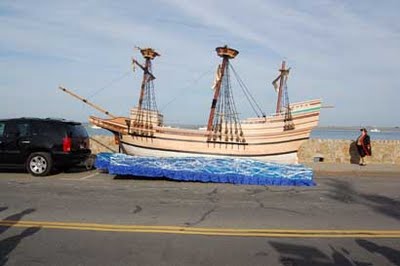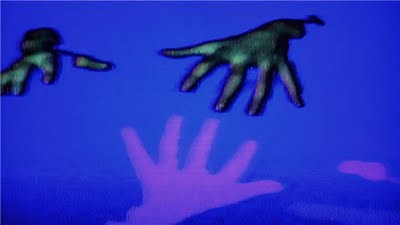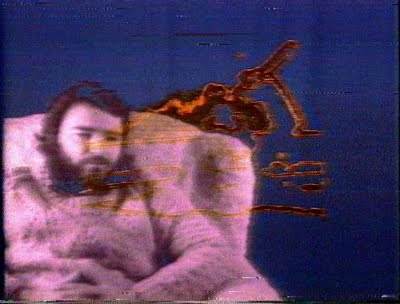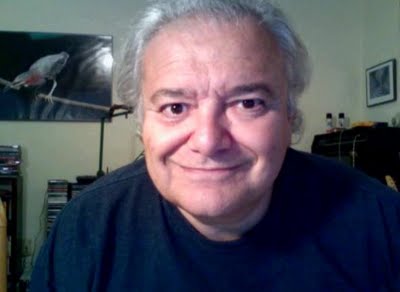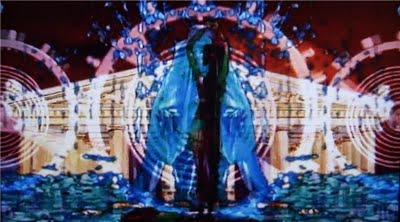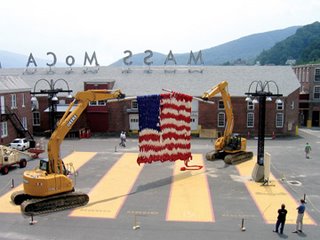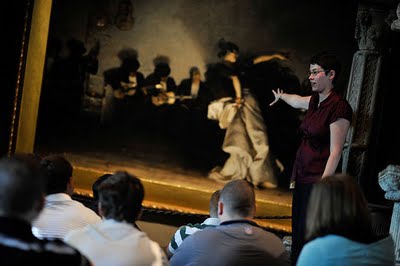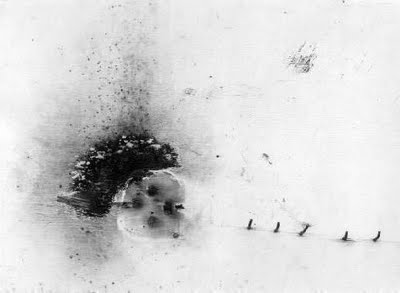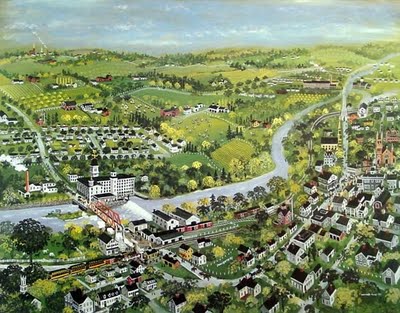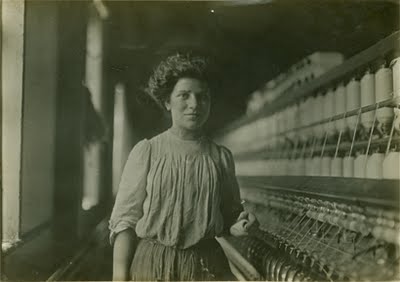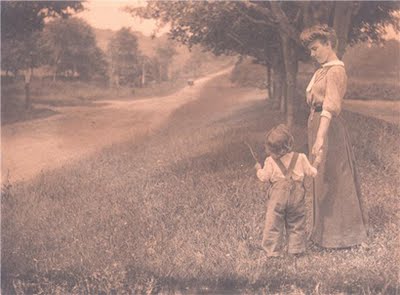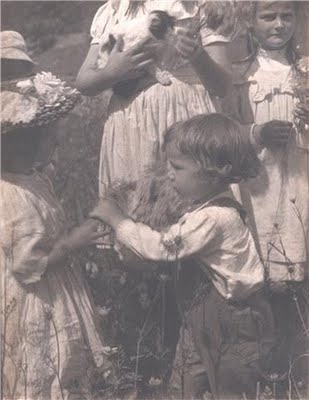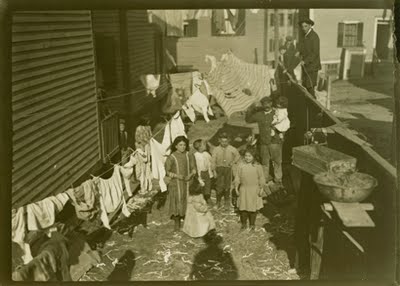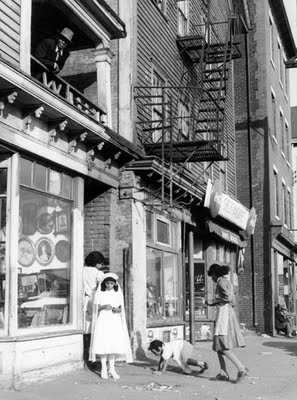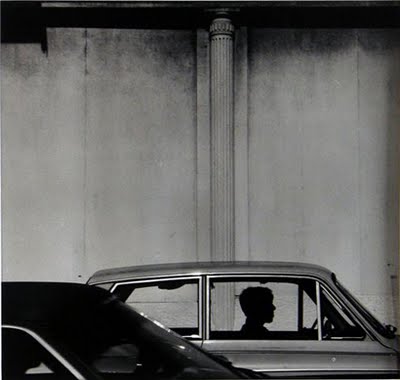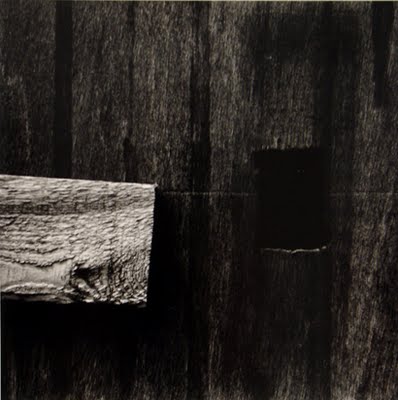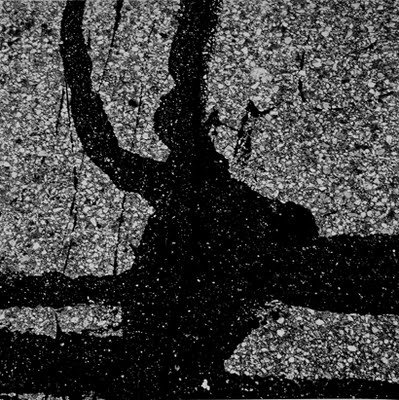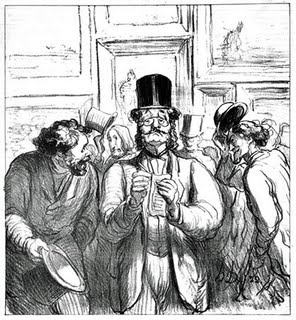
The state of mainstream media coverage of Boston art may be revealed by one telling fact: over the past six months, the lead critic for The Boston Globe has written as many reports about art in Venice as he’s written about living Boston artists.
If New England aims to be a major art center, our institutions need to feature local artists – and that includes the local press.
But the Globe’s lead art critic Sebastian Smee – a finalist for the 2009 Pulitzer Prize for “his fresh, accessible and energetic reviews of the New England art scene,” and the only staff writer fully devoted to visual art coverage in Boston – has written about just four shows featuring living New England artists since the start of May: Cambridge/New York/Warsaw artist
Krzysztof Wodiczko’s installation at the ICA, Maine’s
Robert Indiana at the Farnsworth Museum, the Portland Museum of Art
Biennial, and the Boston
Cyberarts Festival (which only mentions Boston folks in passing). This amounts to 10 percent of the 41 articles and reviews he’s published during this span.
Smee’s tally of local coverage doubles if you include dead artists with New England ties like John Singer Sargent, Maurice Prendergast, Hans Hofmann and his students, Norman Rockwell, and Hyman Bloom, who died in August.
During that same time, Smee has published four pieces on shows outside the region – Kandinsky at the Guggenheim, Francis Bacon at the Metropolitan Museum of Art, and two reports on the
Venice B
iennale.

Would New York tolerate that little coverage of local living artists from writers at the New York Times? Would it tolerate its art critics spending as much time covering shows outside the region as writing about living local artists? Why should Boston tolerate it?
Smee’s seeming disinterest in local living artists may be more a symbol than fully representative of the Globe’s art coverage. Regular Globe freelancer Cate McQuaid may write more about living Boston area artists than anyone else around in her occasional profiles and weekly local gallery reviews. Over the past six months, 30 percent of the visual arts reports by staffer Mark Feeney, who won the 2008 Pulitzer Prize for criticism, have been about living New England artists. But staff culture reporter Geoff Edgers’s only coverage of local visual artists in the past six months seems to have been his Oct. 15 report “Boston recruits local artists to help ward off graffiti.”
The Phoenix’s visual art coverage in Boston and Providence is mainly by me, so I’ll leave that for others to analyze (see below). (Note: I’ve written for the Globe in the past as well.)
Other major media outlets in Boston tend to be worse when it comes to covering art made here. The
Boston Herald’s visual art coverage has been terrible in recent years, but it includes a Nov. 15 profile of Cambridge artist Louisa Bertman, who makes celebrity portraits, and a Nov. 11 report on Wodiczko’s show at the ICA. Local public radio station
WBUR’s website lists five visual arts stories that is has produced since July 29 – only one featured a local living artist, a Nov. 10 report on Wodiczko at the ICA. The website of
WGBH television’s Greater Boston show suggests it has produced six art segments during that time, and the only time it touched on local artists was an Oct. 14 piece on DeCorvdova, which noted the museum’s focus on “artists living and working in New England” but included maybe just one image of a locally-made work but didn’t mention anyone by name.
The upshot is that Boston art reporting is heavily driven by what’s at the MFA and ICA, so if local museums don’t show locally-made art the local press doesn't much feature it either. Which may be a factor for Smee as well, since he seems to have covered just one gallery exhibition since he joined the Globe in May 2008. (This seems to reflect a division of labor at the Globe, with Smee focusing on museums, McQuaid on galleries, and Feeney on photography, among his other duties.)
To its credit, the Globe, despite rounds of staff cuts over the past couple years, has maintained its stable of visual arts reporters. Though when
David Beard, editor of the Globe’s website Boston.com, recently spoke at a Pennsylvania college about what “essentials” newspapers will maintain as they adapt to changing technology and the erosion of their financial model, he left out arts coverage. “As newspapers shrink,” he explained, “the better ones are thinking deeply about who remains. The city hall reporter. The police reporter. The education reporter. The local gossip columnist, the obit writer and sports reporters.”
Beard tells me, “It was an oversight that I didn’t include arts reporting. Of course, we have to do arts reporting. And maybe arts reporting is so important that it could be in the same category as some of the investigative reporting, where we get a foundation to fund it too.”
* * * * * * * * * * * * * * * *
I said I’d let others analyze the Phoenix’s visual art coverage in Boston and Providence, so here are some critiques of my recent reports in those publications:Megaera commented on Sept. 25:
“What I find remarkable — not to mention annoying and disheartening — is that so few writers reviewing art in the newspapers or on the internet are talented or perspicacious enough to write actual art criticism. In fact, as regards Mr. Cook's "Gang of Six", I could get more in-depth analysis from a fourth-grade art appreciation class. Mr. Cook seems qualified only to speak about what suits his taste. Obviously, he likes "paintings of quaint olden days", "Grandma Moses with the easygoing appeal of New Yorker covers", "rusty hues and great clouds billowing over marshes and slivers of shiny water" and paintings as "charming as a toy train set." He shows his ignorance of and, I think, antipathy toward the edgier, less traditional, more courageous forms of contemporary art. His prejudice is revealed when he seems to focus on the "naked lady" and "topless lady" of the work of Angel Quiñone[z] rather than confront the deeper motivations behind Quiñone[z]'s use of the 'naked female form', or even 'naked woman'; his casual use of the word "lady" is a cultural, social, and masculinist presumption for which Mr. Cook takes no responsibility, though his bias clearly colors his view of the work. His monotone description of Bain's work as "cute, bright, graphic, patchwork dreamscapes" reveals Mr. Cook's inability to go deeper than the first glance. Because Anna Shapiro's juxtaposed forms and use of color don't "add up" for him, he assumes they won't "add up" for anyone, though he never acknowledges his own location in relationship to the art, nor his obviously limited visual, philosophical, and theoretical vocabulary. It's as though thinking about the meaning of the work within an informed cultural context hurts his head, and he is unwilling to make himself uncomfortable by doing so. Mr. Cook's flaccid, inarticulate, uninterrogated review reads like a book report from a bored student rather than meaningful criticism from a curious observer who is passionate about art and artists. I think the readers of the Phoenix deserve better.”
Boston photographer
Robert Castagna wrote on Sept. 5 that I'm the cause of, and solution to, all of Boston art criticism’s problems:
“Art criticism in Boston is often simply cronyism or paid for advertising, and the aspiring artists will take it any way they can get it. Believe me I understand that it is not easy to keep a magazine or newspaper going these days but lets face it, integrity must come first. ... The Boston Phoenix recent review of a Tufts University group show touted one particular artist as deserving an ICA one-person show. The author was good friends with the artist. Where’s the professionalism, the integrity? … So we must turn to the internet and online magazines and blogs. Here we have Big, Red and Shiny, The New England Journal of Aesthetic Research and .... ? … Obviously this is where the Boston art scene will get its due.”
* * * * * * * * * * * * * * *
PreviouslyYokelist Manifesto Number 1:
Boston lacks alternative spaces?
Yokelism at the
2008 Boston Art Awards.
Yokelist Manifesto Number 2:
Montreal case study.
Yokelist Manifesto Number 3:
Hire locally.

